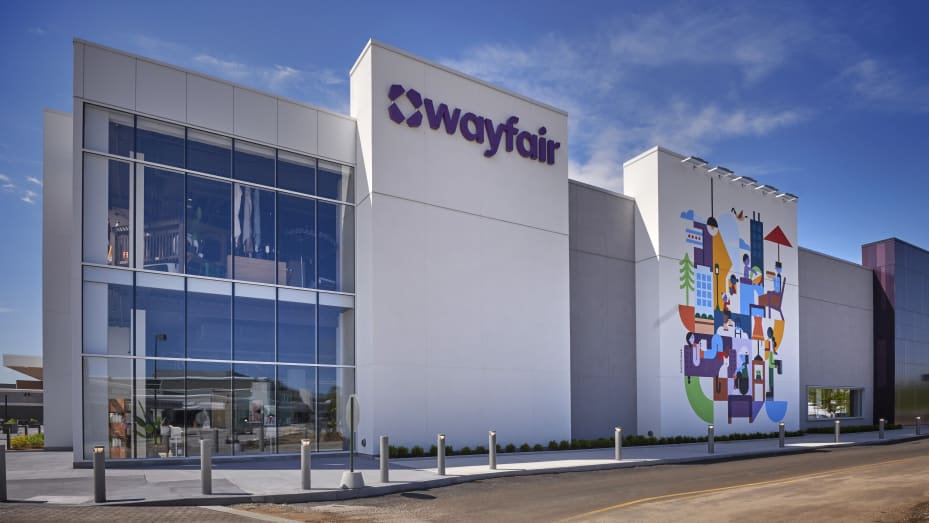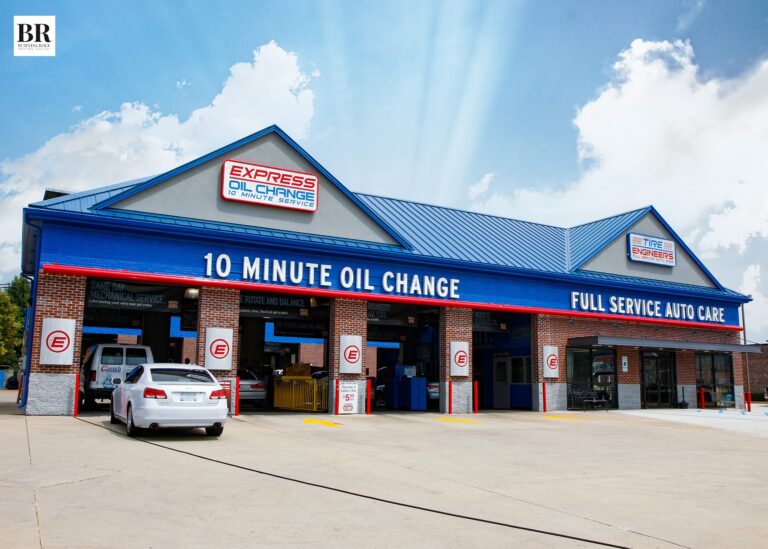Wayfair, the online home goods retailer, has experienced tremendous success in the e-commerce industry. Founded in 2002, the company has quickly risen to become one of the largest online retailers of furniture and home decor. With a vast selection of products and a user-friendly website, Wayfair has attracted millions of customers and generated billions of dollars in revenue. However, despite its online dominance, Wayfair is now considering a bold move – opening physical stores. This article will explore the potential benefits and challenges that come with this decision.
Key Takeaways
- Wayfair’s decision to open a physical store is a game-changer for the online retailer.
- A physical store can provide benefits such as increased customer experience and potential for increased sales and revenue.
- Technology will play a role in Wayfair’s physical store strategy.
- Opening a physical store comes with challenges in today’s retail landscape.
- Wayfair’s physical store has the potential to increase customer loyalty and retention.
The rise of e-commerce and the decline of brick-and-mortar stores
In recent years, there has been a significant shift towards online shopping, leading to the decline of traditional brick-and-mortar stores. The convenience and accessibility of e-commerce have revolutionized the way people shop, allowing them to browse and purchase products from the comfort of their own homes. This trend has been further accelerated by advancements in technology and the widespread use of smartphones. As a result, many traditional retailers have struggled to adapt to this new landscape, leading to store closures and bankruptcies.
The benefits of a physical store for Wayfair
While Wayfair has thrived as an online retailer, there are several benefits that a physical store can offer. Firstly, a physical store can enhance the customer experience by allowing shoppers to see and touch products before making a purchase. This tactile experience can be particularly important when it comes to furniture and home decor, as customers often want to assess the quality and aesthetics of these items in person. Additionally, a physical store can serve as a showroom for Wayfair’s products, showcasing different styles and designs that may not be fully captured online.
The importance of customer experience in retail
| Category | Metric | Value |
|---|---|---|
| Website Traffic | Visitors | 10,000 |
| Website Traffic | Pageviews | 50,000 |
| Social Media | Followers | 5,000 |
| Social Media | Likes | 2,000 |
| Email Marketing | Subscribers | 1,000 |
| Email Marketing | Open Rate | 25% |
Customer experience plays a crucial role in driving sales and building brand loyalty in the retail industry. In today’s competitive market, consumers have high expectations when it comes to their shopping experiences. They want personalized service, seamless transactions, and a pleasant environment. By opening physical stores, Wayfair can create a more immersive and interactive experience for its customers. Trained staff can provide expert advice and assistance, helping shoppers make informed decisions. Furthermore, physical stores can offer additional services such as in-store events and workshops, further enhancing the overall customer experience.
The impact of a physical store on Wayfair’s brand image
A physical store can also have a significant impact on Wayfair’s brand image and reputation. While the company has established itself as a trusted online retailer, having a physical presence can further solidify its position in the market. A well-designed and aesthetically pleasing store can convey a sense of quality and sophistication, aligning with Wayfair’s brand values. Additionally, a physical store can help build trust with customers who may be hesitant to make large purchases online. By being able to physically interact with the products and speak to knowledgeable staff, customers may feel more confident in their buying decisions.
The potential for increased sales and revenue
One of the primary motivations behind opening physical stores is the potential for increased sales and revenue. While Wayfair has been successful online, there is still a significant portion of the market that prefers to shop in-store. By expanding into physical retail, Wayfair can tap into this customer base and capture additional sales. Furthermore, physical stores can serve as distribution centers, allowing for faster delivery and potentially reducing shipping costs. This streamlined logistics process can lead to increased customer satisfaction and repeat purchases.
The role of technology in Wayfair’s physical store strategy
Technology will play a crucial role in Wayfair’s physical store strategy. The company has already demonstrated its commitment to innovation through its use of augmented reality (AR) and virtual reality (VR) technologies on its website. These technologies allow customers to visualize how furniture and decor items will look in their own homes. In a physical store, Wayfair can take this technology a step further by incorporating interactive displays and smart home features. For example, customers could use touchscreens to customize furniture options or experience virtual room designs. By leveraging technology, Wayfair can create a unique and immersive shopping experience that sets it apart from traditional retailers.
The challenges of opening a physical store in today’s retail landscape
While there are numerous benefits to opening physical stores, Wayfair will also face several challenges in today’s retail landscape. Firstly, the cost of establishing and maintaining physical stores can be significant. Rent, utilities, staffing, and inventory management are just a few of the expenses that need to be considered. Additionally, competition in the home goods market is fierce, with both traditional retailers and online competitors vying for customers’ attention. Wayfair will need to differentiate itself and offer a compelling reason for customers to choose its physical stores over other options.
The potential for increased customer loyalty and retention
Despite the challenges, opening physical stores can lead to increased customer loyalty and retention for Wayfair. By providing a seamless omnichannel experience, where customers can seamlessly transition between online and offline shopping, Wayfair can create a more cohesive brand experience. This integration can foster stronger relationships with customers, leading to increased loyalty and repeat purchases. Additionally, physical stores can serve as hubs for customer engagement, hosting events and workshops that build a sense of community around the brand.
The impact on Wayfair’s online sales and marketing strategy
Opening physical stores may also have an impact on Wayfair’s online sales and marketing strategy. While the company has built its success primarily through its online presence, the addition of physical stores can complement its existing efforts. For example, customers who visit a physical store may be more likely to make subsequent purchases online. This cross-channel behavior can drive overall sales and increase customer lifetime value. Additionally, Wayfair can leverage its physical stores as marketing tools, using them to promote online exclusives and drive traffic to its website.
The potential for increased competition in the home goods market
As Wayfair expands into physical retail, it may face increased competition in the home goods market. Traditional retailers that have already established a strong presence in brick-and-mortar stores may view Wayfair’s entry as a threat and respond with their own online initiatives. Additionally, other online retailers may also consider opening physical stores to capture a larger share of the market. Wayfair will need to stay ahead of the competition by continuously innovating and delivering exceptional customer experiences.
The importance of location and store design in Wayfair’s physical store strategy
Location and store design will play a crucial role in Wayfair’s physical store strategy. Choosing the right locations is essential to ensure visibility and accessibility for customers. Wayfair may consider opening flagship stores in major cities, as well as smaller concept stores in suburban areas. Store design is equally important, as it sets the tone for the overall shopping experience. Wayfair can draw inspiration from its online platform and create visually appealing and well-organized stores that reflect its brand identity.
The potential for new partnerships and collaborations
Opening physical stores can also open up opportunities for Wayfair to form new partnerships and collaborations. By establishing a physical presence, Wayfair can forge relationships with other retailers or designers who may be interested in showcasing their products in its stores. These partnerships can lead to exclusive collaborations and unique product offerings, further differentiating Wayfair from its competitors.
In conclusion, Wayfair’s decision to open physical stores represents a bold move that comes with both potential benefits and challenges. While the company has experienced tremendous success as an online retailer, there are several advantages that a physical store can offer, including enhanced customer experience, improved brand image, increased sales and revenue, and the potential for new partnerships. However, Wayfair will also face challenges such as increased competition, the cost of establishing physical stores, and the need to integrate its online and offline strategies seamlessly. By carefully navigating these challenges and leveraging technology, Wayfair has the potential to further solidify its position in the home goods market and continue its growth trajectory.
FAQs
What is Wayfair?
Wayfair is an American e-commerce company that sells furniture and home-goods.
What is Wayfair’s bold move?
Wayfair’s bold move is opening a physical store in Massachusetts, which is the first of its kind for the company.
Why did Wayfair decide to open a physical store?
Wayfair decided to open a physical store to provide customers with a hands-on experience of their products and to increase brand awareness.
Where is Wayfair’s physical store located?
Wayfair’s physical store is located in the Natick Mall in Massachusetts.
What can customers expect from Wayfair’s physical store?
Customers can expect to see and touch a selection of Wayfair’s products, receive design advice from in-store experts, and place orders for home delivery.
Will Wayfair’s physical store have the same prices as their online store?
Yes, Wayfair’s physical store will have the same prices as their online store.
Will Wayfair’s physical store have the same selection as their online store?
No, Wayfair’s physical store will have a curated selection of products, but customers can still access Wayfair’s full selection online.
When did Wayfair’s physical store open?
Wayfair’s physical store opened on August 21, 2019.
Does Wayfair plan to open more physical stores?
Wayfair has not announced any plans to open more physical stores at this time.














+ There are no comments
Add yours